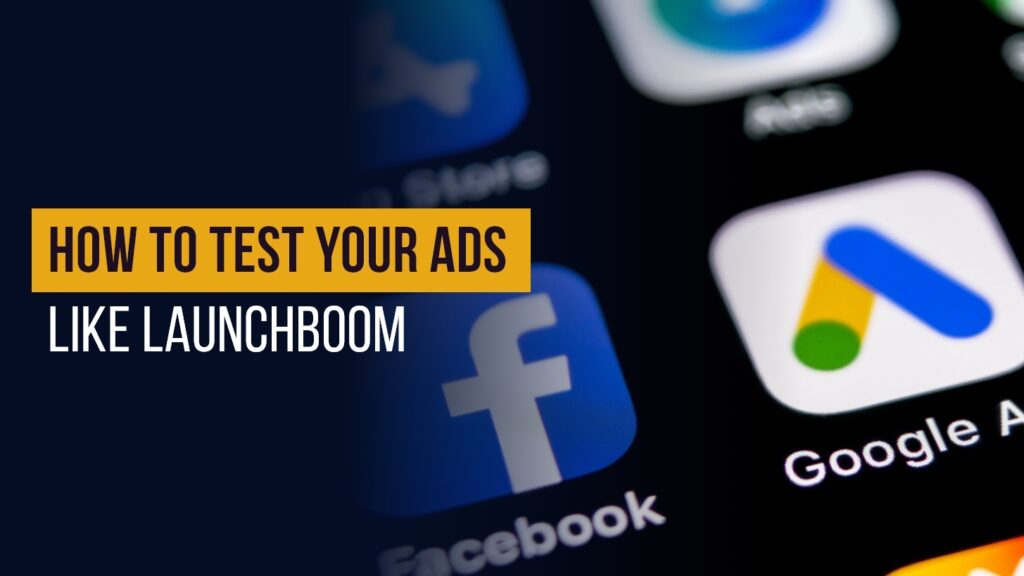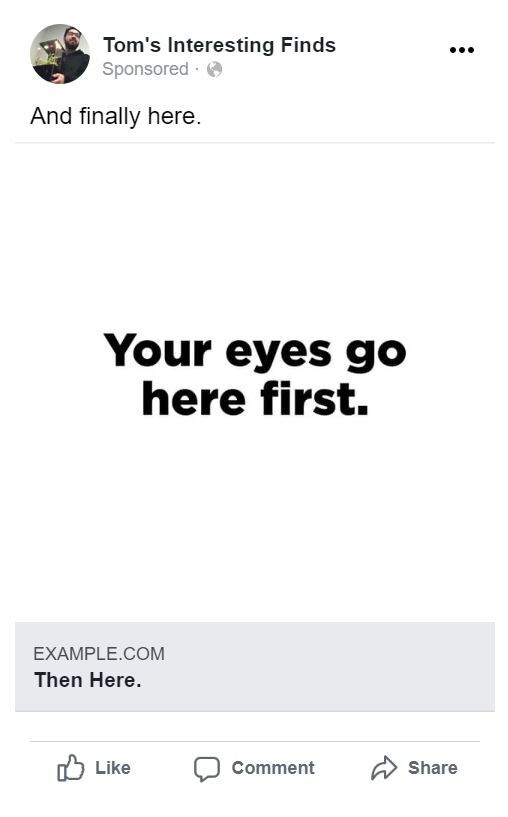
The most valuable part of digital marketing is how much data you can get about your customer’s engagement at every step of the funnel.
You can see what imagery is grabbing their attention and making them click, what audience personas are resonating with your messaging, what landing page structure is making them convert, and much more. Optimizing all of this data is the key to getting the best performance from your ad spend.
However, with all of these options to play with, it can be difficult to figure out where to start.
In this article, I’m going to break down the order in which LaunchBoom tests ad variables to maximize our learnings and give you the most valuable, cost-efficient data about your product possible.
Imagery
Imagery (including video) is the FIRST thing we start our tests with.
It’s the “scroll stopper” that grabs people’s attention and makes them look at your ad in the first place. Having great copy doesn’t matter if nobody’s stopping to read it.
Studies from Facebook show that this is how users’ eyes move when viewing an ad:

The first thing people will look at is your image or video. If that doesn’t grab their attention and make them stop scrolling through their feed, you’ve already lost them. Finding out which ad creative gets the best engagement is critical before moving on to your next test.
Body Text
The next variable we test is our body copy, which is the text that goes at the top of an ad.
This might seem surprising given that the graphic we just showed says that the next thing people look at is the headline, but there is logic behind it.
The reason we test body text before our headlines is to test out different use cases and product positionings. Body text has a much higher character count than headlines, which lets us better determine what problems/solutions, benefits, and use cases people think are most valuable. This is necessary before moving on to constructing an attention-grabbing headline around that angle.
So, we generally use a fairly neutral headline that clearly explains what the product is, then test out our different product angles with body text to determine our next step forward.
Headlines
Up third is our headline test.
Now that we understand what product positioning is getting the best engagement, we can create a headline that lines up with that.
A good headline is similar to a good image. We want it to be clear and attention-grabbing, so they either read the body text or click through to the Landing Page.
We don’t have a lot of characters to work with, so being concise and testing out what formatting around the product positioning we found in the body text is most engaging is the goal here.
If you find you’re having trouble writing effective headlines, don’t hesitate to scout for competitors’ examples on Facebook for inspiration!
Landing Page and Audiences
Finally, now that we have our best performing combination of ad assets, we can test out new audiences and our Landing Page.
Now that we know what our best creative combination is, scaling it out to see how many different audience personas we can generate cost-effective leads from is one of the strongest indicators of how heavily we can scale this campaign.
A product that a lot of people respond well to makes it easier to spend more money without running our audiences dry and having increased lead costs over time.
Also, since we’ve optimized our traffic to the page with our best ad creative, it’s more cost-effective to test the Landing Page with all these clicks to work with. We’ll look at what imagery and messaging worked best in our ads, and organize the landing page to prioritize those points first.
Overall, our process is based around learning. Even after we’ve tested all these variables, we continue to test against what’s working to constantly try to improve our metrics further.
It’s important to note that even though this is our general structure, we can change the order in which we test things based on the product and assets we have to work with. However, this formatting gives us the most consistent results, and the most cost-effective learning with clean data to iterate from.
If you want to learn more about our pre-launch advertising system, book a call with our team today!




